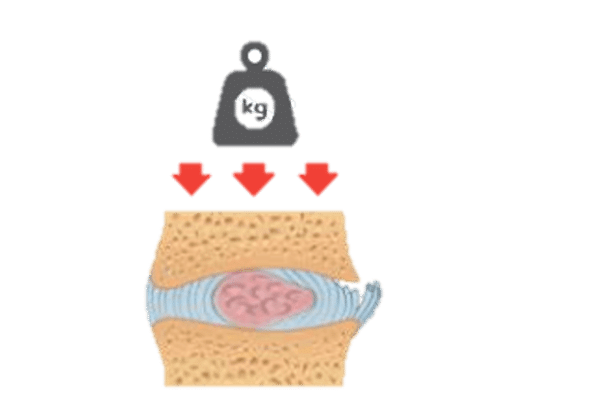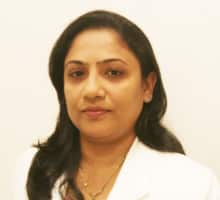Request Appointment
Enter your details and we will be in touch with you shortly;
Or call
8655885566
between 8 am and 8 pm.

Pain is a common symptom of spinal stenosis and the location of the pain will depend on whether the stenosis is present in the upper or lower portions of the spine. 95% of patients with spinal canal stenosis experience sciatica while 70% complain of sensory changes in their lower limbs. Some of the other symptoms of spinal stenosis include:
 Professional diagnosis required
Professional diagnosis required Chronic, can last for years
Chronic, can last for years Treatable with 4 weeks of QI Spine Therapy
Treatable with 4 weeks of QI Spine TherapyThe main cause of spinal stenosis is aging as the ligaments that support the spine thicken and calcify. Additionally, bones may get bigger or bulge out (bone spurs) which greatly increases the risk of spinal stenosis. Some of the other causes of spinal stenosis include:
 Professional diagnosis required
Professional diagnosis required Chronic, can last for years
Chronic, can last for years Treatable with 4 weeks of QI Spine Therapy
Treatable with 4 weeks of QI Spine TherapySurgeons often recommend surgery for spinal canal stenosis. These surgeries can correct or suppress spinal canal stenosis symptoms but there is a high risk of pain recurrence. Studies show that non-surgical treatment methods are effective in reducing pain and maintaining mobility. Identifying the affected structures is a key factor in successful spinal canal stenosis treatment.
QI uses Digital Spine Analysis (DSA), an advanced European technology that provides precise functional diagnosis. Unlike MRI and Xray tests that only identify bone and tissue damage, the DSA test can quantify muscle function and identify weakened muscles. Spinal canal stenosis can affect the neck (cervical stenosis) or the low back (lumbar stenosis).
Surgical treatment is only recommended in severe cases where there is bone overgrowth or bone spurs. In cases where surgery is required, a multi-specialist team will monitor the patient’s progress and ensure that their recovery is without incident.
QI customizes every treatment protocol depending on the needs of each patient. Each protocol is designed to reduce disability and pain and is derived from an algorithm based on over 47,000 past cases. This evidence-based treatment system allows specialists to recommend treatment plans that have the highest success rates. This ensures that every patient with spinal canal stenosis receives treatment that is best suited to his/her needs.
Doctors often prescribe strong pain killers as the first line of treatment for spinal canal stenosis but these drugs often cause serious health problems and even damage the liver, kidneys, and heart. However, QI utilizes Frequency Specific Microcurrent (FSM) technology from Germany to reduce lower back pain. The FSM method uses a low-level electric current to promote repair and eliminate back pain. Heat and cold therapy is also effective in reducing pain and is often combined with medical movements such as the McKenzie method and kinetic control movements to relieve the pressure on the affected areas.
Spinal canal stenosis pain can become severe if it is left untreated. It can also result in permanent nerve damage so visit a spine specialist at the earliest for a diagnosis
 Professional diagnosis required
Professional diagnosis required Chronic, can last for years
Chronic, can last for years Treatable with 4 weeks of QI Spine Therapy
Treatable with 4 weeks of QI Spine TherapySurgeons often recommend surgery for spinal canal stenosis. These surgeries can correct or suppress spinal canal stenosis symptoms but there is a high risk of pain recurrence. Studies show that non-surgical treatment methods are effective in reducing pain and maintaining mobility. Identifying the affected structures is a key factor in successful spinal canal stenosis treatment.
QI uses Digital Spine Analysis (DSA), an advanced European technology that provides precise functional diagnosis. Unlike MRI and Xray tests that only identify bone and tissue damage, the DSA test can quantify muscle function and identify weakened muscles. Spinal canal stenosis can affect the neck (cervical stenosis) or the low back (lumbar stenosis).
Surgical treatment is only recommended in severe cases where there is bone overgrowth or bone spurs. In cases where surgery is required, a multi-specialist team will monitor the patient’s progress and ensure that their recovery is without incident.
QI customizes every treatment protocol depending on the needs of each patient. Each protocol is designed to reduce disability and pain and is derived from an algorithm based on over 47,000 past cases. This evidence-based treatment system allows specialists to recommend treatment plans that have the highest success rates. This ensures that every patient with spinal canal stenosis receives treatment that is best suited to his/her needs.
Doctors often prescribe strong pain killers as the first line of treatment for spinal canal stenosis but these drugs often cause serious health problems and even damage the liver, kidneys, and heart. However, QI utilizes Frequency Specific Microcurrent (FSM) technology from Germany to reduce lower back pain. The FSM method uses a low-level electric current to promote repair and eliminate back pain. Heat and cold therapy is also effective in reducing pain and is often combined with medical movements such as the McKenzie method and kinetic control movements to relieve the pressure on the affected areas.
Spinal canal stenosis pain can become severe if it is left untreated. It can also result in permanent nerve damage so visit a spine specialist at the earliest for a diagnosis
As your muscle strain heals, it is important to keep it flexible to prevent secondary problems such as a stiff back. Spine specialists will recommend exercises that you can continue to practice in order to make sure that the strained muscle heals completely so that there is no chance of a re-injury at the same location.
If the pain from a strained back muscle keeps increasing or if you start to experience bladder issues, you should consult a spine specialist right away for a definite diagnosis
 Professional diagnosis required
Professional diagnosis required Chronic, can last for years
Chronic, can last for years Treatable with 4 weeks of QI Spine Therapy
Treatable with 4 weeks of QI Spine Therapy


Have a question?
Ask our spine specialists
Who is a QI Spine Specialist?
A QI Spine Specialist is a medical expert with

Dr. Nidhi Sanghvi Shah

Dr. Shital Gaikwad

Dr. Richa Bhatia
9000 hours
of specialisation in treating back and neck conditions
32 hours
of spine physiotherapy specialisation methods in McKenzie concepts, Kinetic control, Neurodynamic solutions, Mulligan’s concepts
500 hours
and 6 months of QI Spine specialisation courses